Krav Maga Striking: Striking Using the Hands
Fundamental Krav Maga strikes using the hands: straight punch, hammer fist, palm heel strikes, eye strikes/gouges, throat strikes. How to throw them. What to target.

Krav Maga Worldwide self-defense utilizes a variety of different methods of striking with the hands. All of these techniques are meant to be easy to learn, easy to retain, and effective at causing damage to an attacker in the case of an assault.
Straight punches, palm heel strikes, hammer fists, eye strikes, and throat strikes are all taught in Krav Maga Worldwide Level 1 self-defense. Some of these techniques, and the areas that they target (like the eyes, throat, and back of the head) are considered “dirty” or “illegal” in the context of competition or a sanctioned sport fight. Within the Krav Maga Worldwide system however there is no technique that we consider “dirty” or “illegal” if we are in a situation where we must defend our own life, or the life of a loved one.
Straight Punch
Straight punch is one of the very first techniques students learn in Krav Maga Worldwide Level 1 self-defense. It is one of the building blocks of our system…and should be one of the building blocks of ANY striking system. It’s really important that students become effective with straight punches so they can build a skillset that is, overall, effective and fundamentally sound.
In order to throw an effective straight punch you have to start by making a fist the correct way.
Start with your hand open.
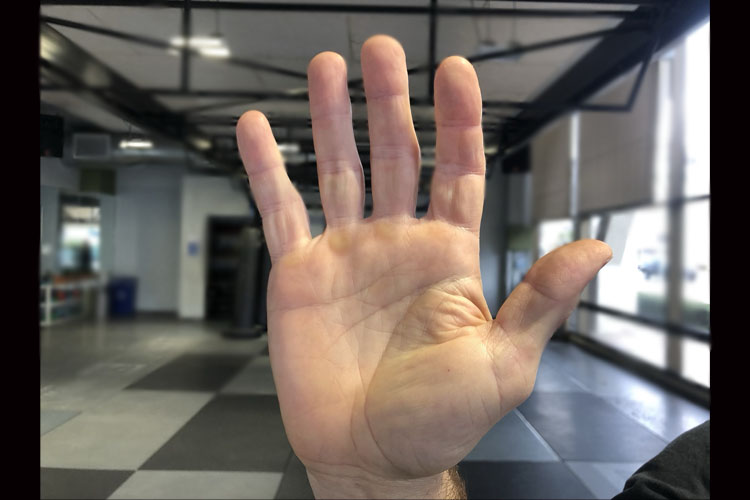
Then fold your fingers down, curl your fingertips into your palm, and “lock” your pointer and middle finger down with your thumb.
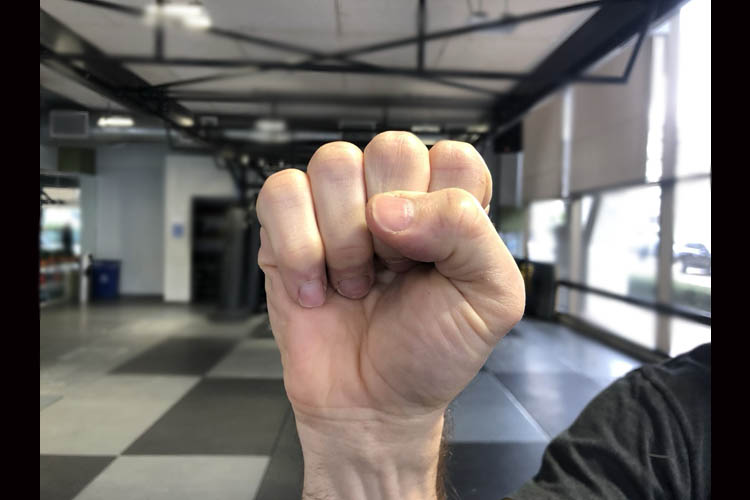
DON’T put your thumb inside your fist.
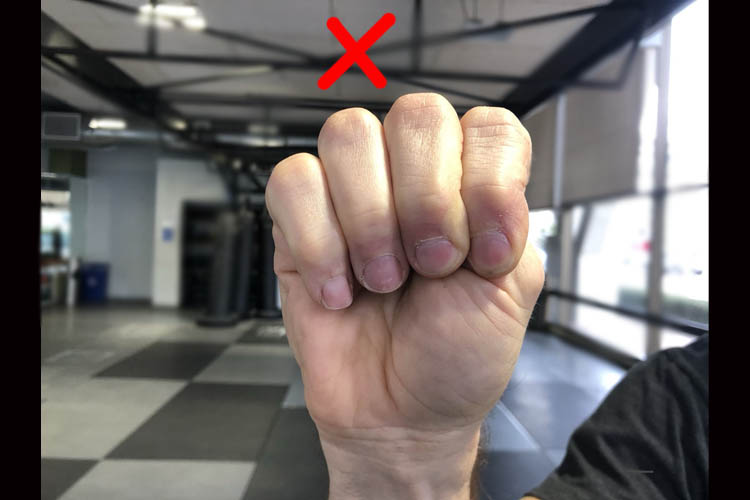
DON’T leave your thumb hanging over your fist.

When throwing a straight punch, from your forward hand or your rear hand, you have to use your legs to drive off of the ground and rotate your hip and shoulder forward. This is what literally “throws” the punch. Keep this in mind. Your arm alone can generate far less power than when your whole body turns into the punch. Check out the picture below and note how far forward the puncher’s left shoulder has turned. It’s basically touching his chin and cheek.
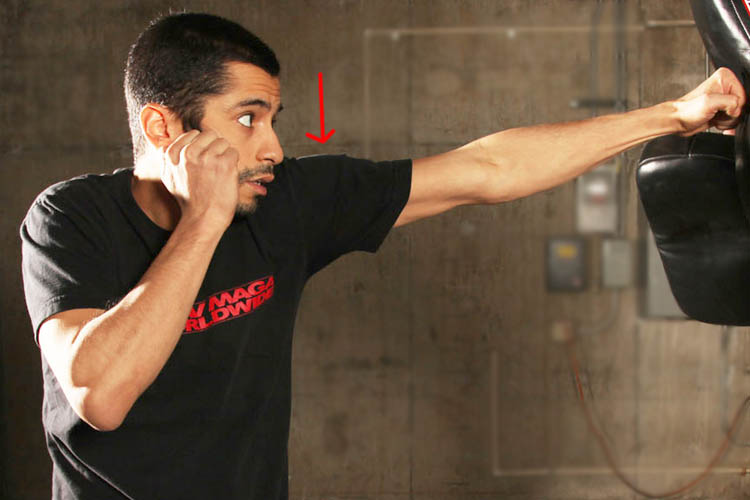
The rotation of the body is what throws the punch and generates power. The striking surface of the hand that is used for a straight punch should be the “top two” knuckles of the fist (pointer finger and middle finger). We generally think about the straight punch targeting areas of the face that are located “eyebrows and below” on the opponent or attacker.
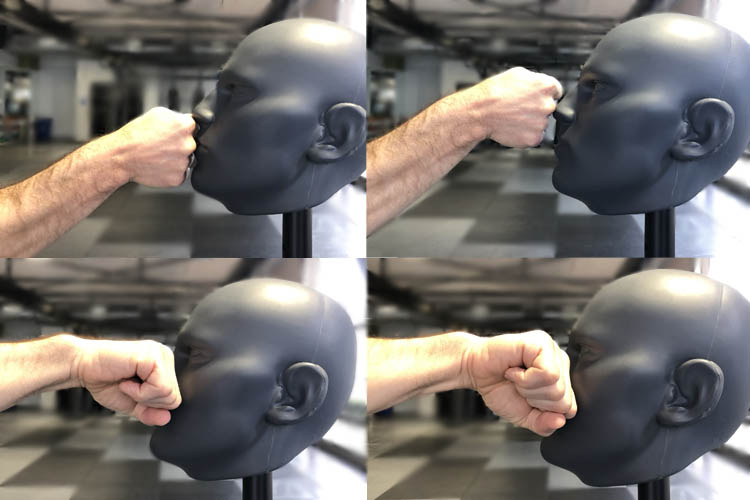
These are soft areas of the face (as compared to a forehead) and if damaged they will also have an effect on breathing and/or vision. There will be a pain response and a functional response to being punched here.
Keep this in mind because, in contrast, we try to keep the soft targets of our face somewhat protected, so always keep your chin down in a fighting stance. We don’t want to get punched by ANYONE, ANYWHERE, really…but, all things considered, getting punched in the forehead will cause much less damage than in the soft targets of the face.
Get power in your strikes!
Hammer fist
The hammer fist is another building block of the Krav Maga Worldwide self-defense system. It’s a versatile strike that can be used out of necessity (ie. if you hurt your hand and cannot use the ‘top two’ knuckles) or out of convenience/reaction (ie. this is just the first strike that comes out of you when reacting aggressively to defend yourself). The hammer fist is effective because it allows the striker to make damage while keeping their hand, and those top two knuckles, relative protected from absorbing damage.
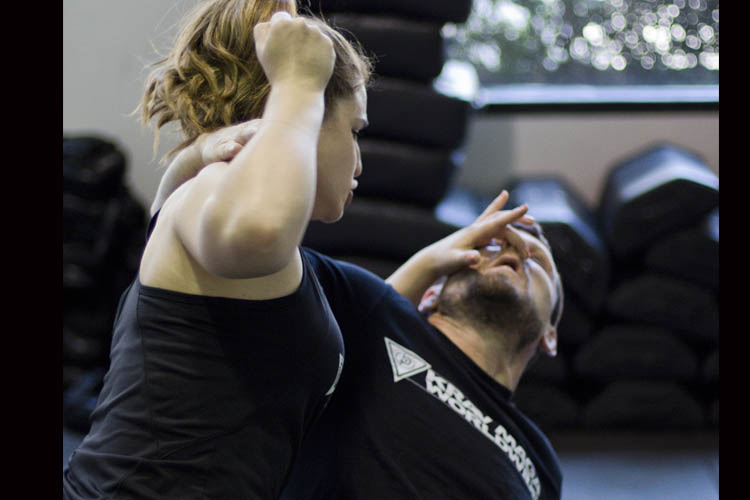
To make a hammer fist, start by making a fist as described above. The body mechanics of throwing a hammer fist are the same as with a straight punch. Rotation of the hips and shoulders generates power and “throws” the strike. Keep in mind that the striking surface for the hammer fist will be the area of the hand just below the pinky finger.
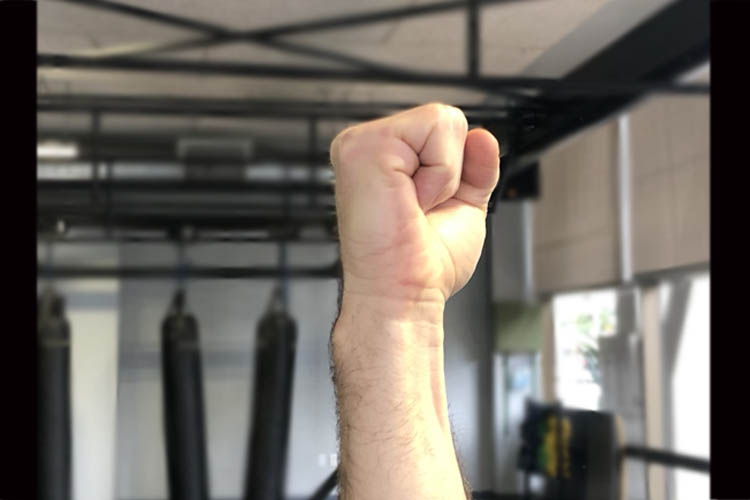
Krav Maga Worldwide self-defense utilizes hammer fists in several different directions and angles, the first of which is the forward hammer fist.
The forward hammer fist can be thrown slightly on an upward angle if the defender is shorter than the attacker, striking the same soft targets of the face as a straight punch…
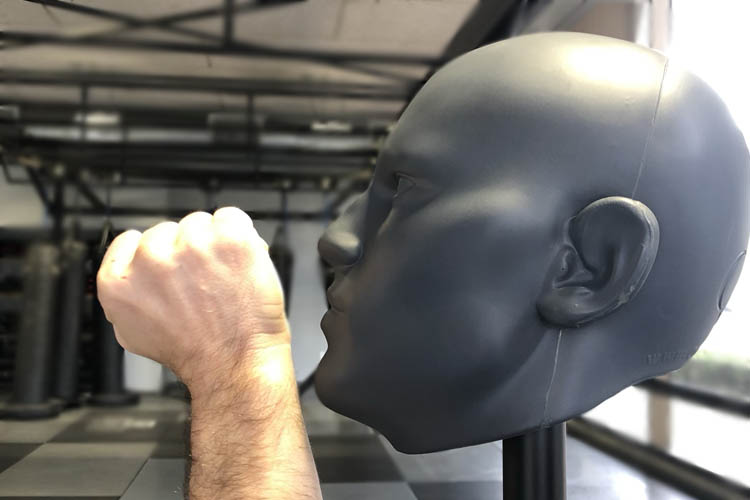
….or at a slightly downward angle if the defender is taller than the attacker (again, same targets) but both of these variations are going forward.
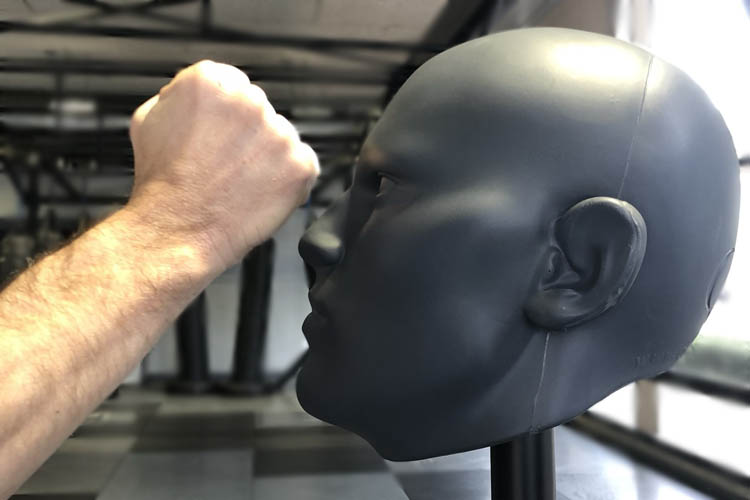
We can also use a hammer fist to target the back of the head. Keep in mind that this is one of those strikes that is considered “illegal” in pretty much any competition setting.
Similar to the temple and the jaw, there is an “off button” in the back of the head that causes people to be knocked unconscious quite easily. Krav Maga striking looks to exploit this if we can, but using the top two knuckles (as in a straight punch) against the back of the head is somewhat dangerous and could damage the defender’s hand, so the hammer fist is a better option.
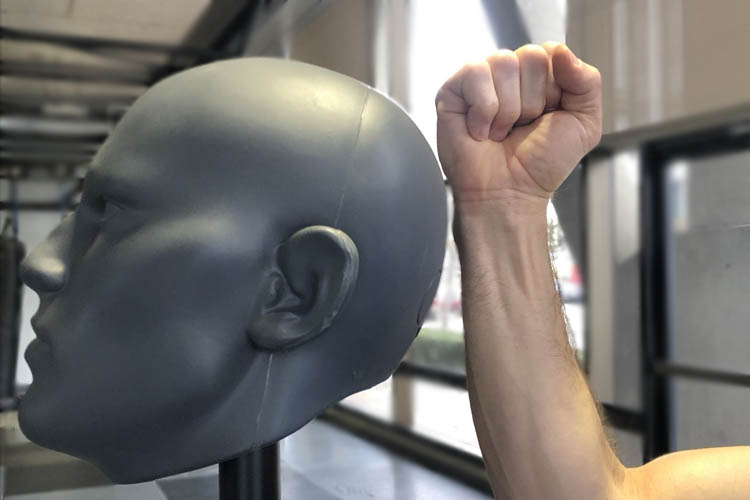
Hammer fist can also be thrown to the side when dealing with an attacker who is not in front of the defender and should be made with the defender’s elbow high, protecting their own face. Hips and shoulders rotating will generate the power in this strike as well.
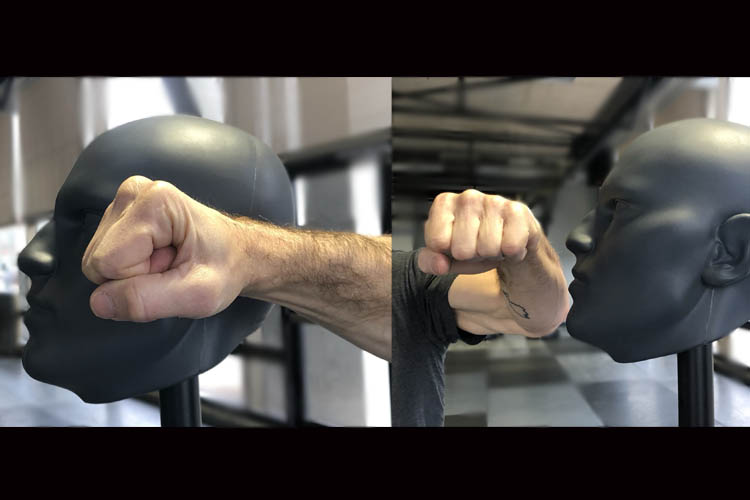
…again, looking to strike the soft targets of the face, or the jaw or temple.
Krav Maga striking also involves throwing hammer fists that drop down, or have a downward trajectory. This is another way of exploiting the “off button” in the back of the head. In order to get powerful rotation in the hips and shoulders going down, the defender has to use their legs to change levels and drop down weight into the strike.
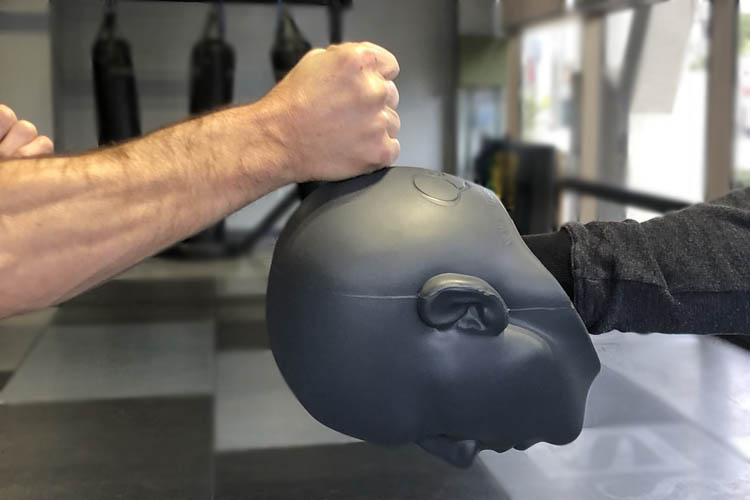
One of the other areas frequently targeted by Krav Maga striking is the groin. A person’s natural reaction to being struck in the groin is often to fold forward, exposing the back of the head. This sets up the opportunity to use the downward hammer fist to the back of the head…and we frequently train on this technique in this context.
Krav Maga Level 1 striking techniques.
Check out this video to see all of the striking techniques described in this blog!
Palm heel strike
The palm heel strike can be thought of as a straight punch with the heel of the palm. The body mechanics of throwing the palm heel strike are the same as the straight punch and hammer fist.
In Krav Maga striking, palm heel strikes are set up by simply pulling the fingers of the striking hand back and jutting the palm of the striking hand forward.
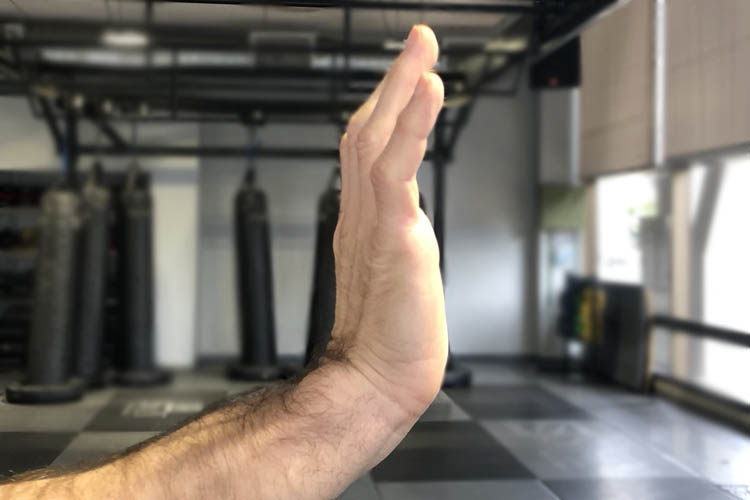
Rotating the hips and shoulders to throw the strike out is imperative to generating power. The defender should strike at the soft targets of the face as with straight punch and hammer fist.
Since the palm heel strike uses a striking surface alternative to the top two knuckles it can be used in different angles
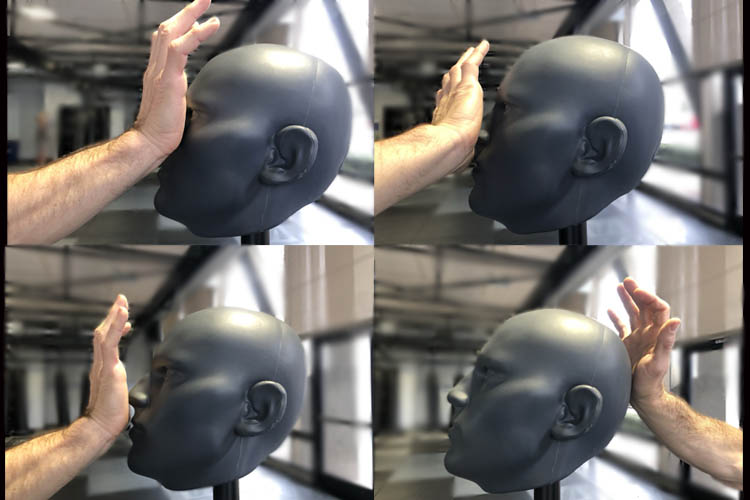
…and, like the hammer fist, it can be used to target the back of the head.
Eye strikes/gouges
As mentioned before Krav Maga striking techniques don’t take into account any sort of rule set. The purpose is to make damage to someone who is trying to harm us. Most often what we are looking to do is fight our way OUT of an assault. Krav Maga striking is part of a self-defense system. We never consider that we are going to be the aggressor in a fight…so we have to do what we can, and must, in order to get home safe.
In that context Krav Maga Worldwide teaches students to make strikes to an attacker’s eyes. This could not only cause a pain reaction in the attacker that ceases the ongoing attack, but it could affect the attacker’s vision and give the defender a chance to escape.
The eye strike in Krav Maga striking is set up by the defender spreading their fingers out somewhat and making their fingers slightly rigid. Think about making your hand into a position where you’ll basically have four spears sticking out from your knuckles, with some space between them.

It’s important to keep your fingers rigid so that they can do damage to the eyes, but spaced part so that the fingers can negotiate the structures of the attackers face, and get to the eyes.
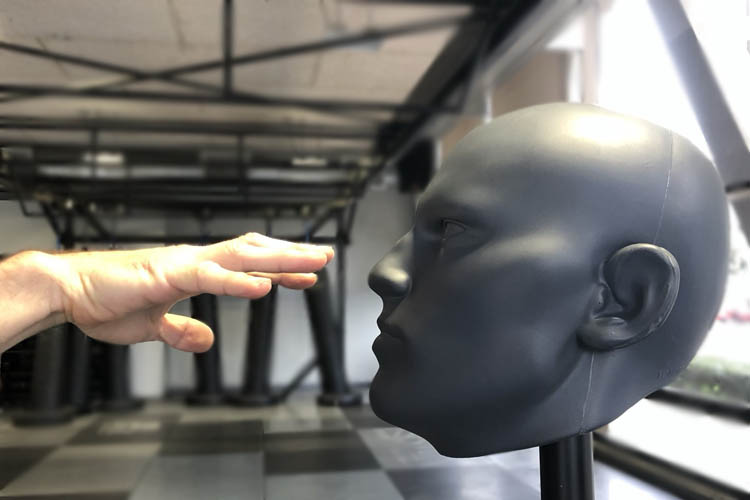
To throw the strike, as with previous strikes, rotate the hips and shoulders and drive the “finger spears” forward with the intent of going into, and through, the attackers eye sockets.
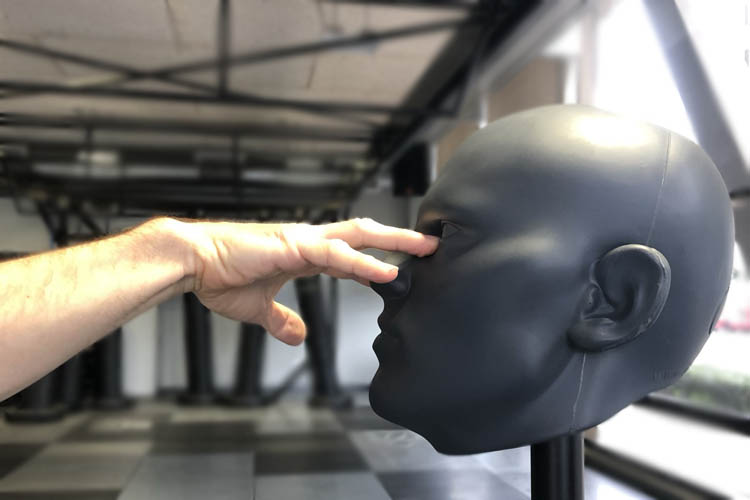
Throat strikes
Krav Maga striking techniques with the hands also involve targeting an attacker’s throat. If we think about some of the points previously discussed, like striking to areas that are soft, easy to cause damage to, and cause both a pain and functional reaction in the body, there’s a lot of logic behind making a throat strike in self-defense.
In contrast to the eye strike the throat strike is made with the fingers of the hand brought tightly together. If we think of the eye strike set up as having spears at the end of our hand, we want to think about the setting up the throat strike with a hand that would be the point, or tip, of one spear…or the defender making their hand into an “arrowhead”.
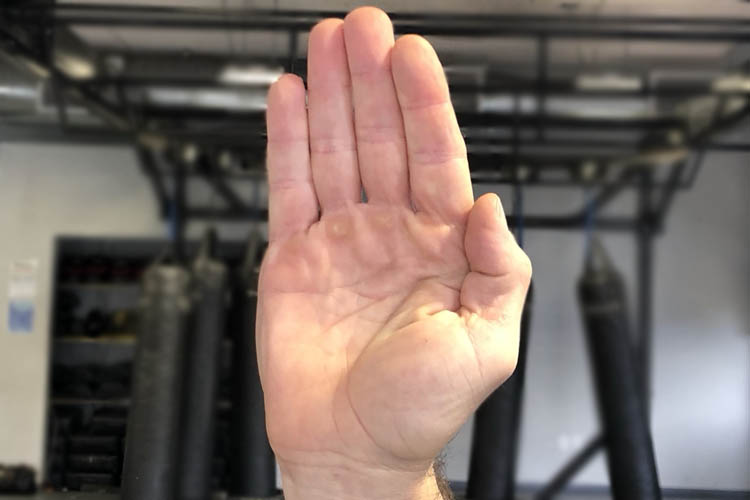
When making the throat strike, the mechanics stay consistent with previous strikes, rotate the hips and shoulders to throw the arm and hand forward, drive the hand into the attacker’s throat, below the chin.
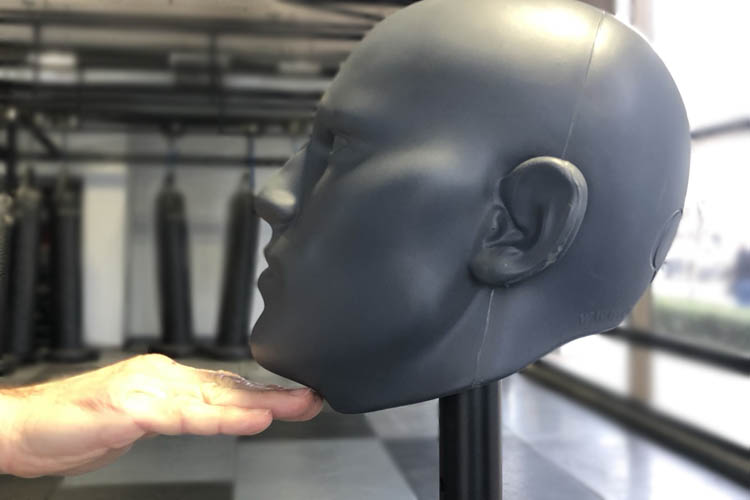
Krav Maga striking techniques are meant to be effective, easy to learn, and easy to remember/recall under stress. Strikes made with the hands are just one part of the overall striking system that Krav Maga Worldwide teaches in our self-defense program as well as our in our fight and and even in our fitness programs.
Get started. Get safer and stronger.
There are many more variations to punches like hooks, uppercuts, and overhands. Krav Maga striking also involves using elbows and knees and, of course, the legs and feet for kicks. Check back with our blogs to see a breakdown of other striking techniques in weeks to come.
Check out some tutorials on striking at our Online Academy!
Training at any Krav Maga Worldwide certified training center will teach you these striking techniques and help you train on them so that you can be effective with them in the case that you are assaulted.
